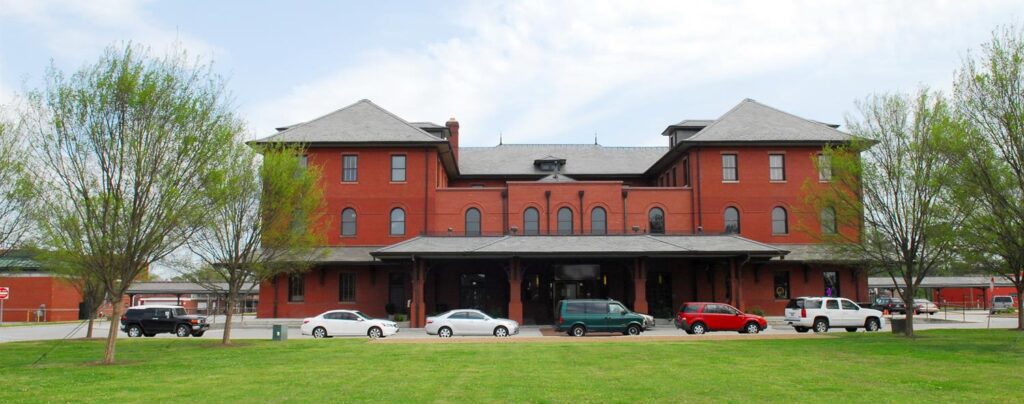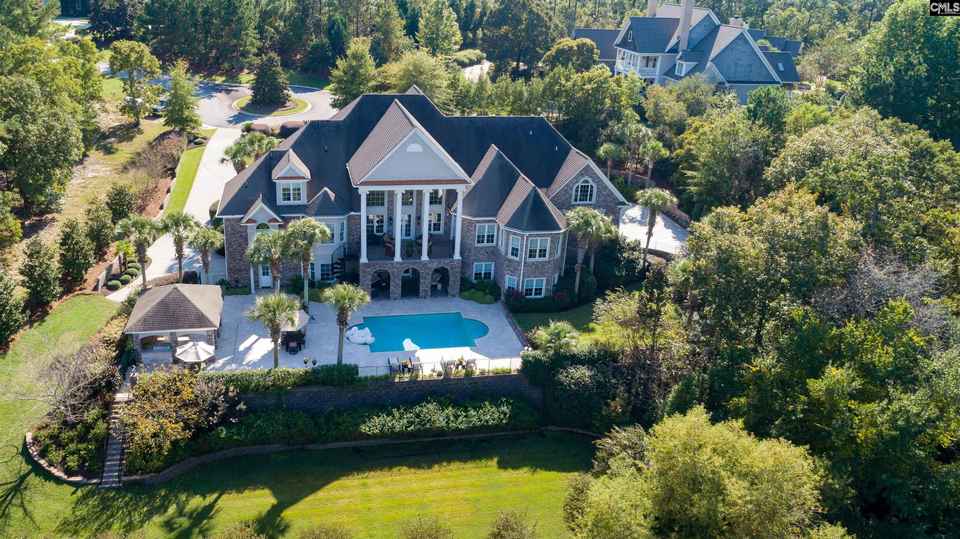HOA Management in Pleasant Garden, NC
William Douglas Property Management offers HOA Management and Association Management services in Pleasant Garden, NC
Pleasant Garden, NC Facts & Information
Pleasant Garden is a municipality located in the southeastern sector of Guilford County, North Carolina. Pleasant Garden is chartered as a municipal town. Pleasant Garden was incorporated by the North Carolina General Assembly in 1997.
The Early History of Pleasant Garden and Guilford County
Pleasant Garden was only incorporated in 1997. However, the area was first settled in 1786. The name “Pleasant Garden” came into common usage in that area in the late 1800s. The first post office in the future Pleasant Garden area was opened on July 1, 1841. The first postmaster was Frederick “Frank” Fentriss, and this post office became known as Fentriss. In the development of communities within the United States, many communities just “sprang up.” They sprang up along old Native American trading trails, river fords, railroad water stops, and many times there were no official names of these communities. It was very common for the community to be named after a natural element of the area or a founding family’s last name. Interestingly, it was not unusual for a community to be named after the postmaster.
In the early days of the United States postal system, it was common that mail was handled by third parties from pickup to delivery. The United States Post Office Department would enter into an agreement with a party in a community to accept and deliver mail on behalf of the United States Post Office Department. This party would have the title of postmaster or postmistress. This person would typically be the owner of a general store or some other business establishment within the community. The United States Post Office Department would select these types of business establishments because they were a common community gathering place in the center of the population. The business establishment owners would actively pursue post office contracts because of the customer traffic it would generate to their establishment and the extra compensation generated from operating the post office.
The post office was known as Fentriss, and it does not appear that the community was identified by that name. However, on March 31, 1876, George W. Ross became the postmaster and the name of the post office changed to Pleasant Garden.
Agriculture was the economic driver of the area for original settlers. And agriculture played a large role in the area economy well into the 20th century. Corn and other grains have been a primary crop.
Around the turn of the 20th century is when the population in Pleasant Garden began to increase. The chief enterprise in the small community was the Pleasant Garden Company. The Pleasant Garden Company manufactured chairs, a cotton gin service, and a mill to process grains into flour. The Pleasant Garden Company operated a large general mercantile store, selling shoes, assorted dry goods, and other family supplies.
The Pleasant Garden Company chair factory could produce up to 7,000 chairs a day. The factory was located next to the railroad tracks and could ship the oak chairs to High Point and Thomasville as soon as they were completed. The oak lumber used in the production was sourced from the surrounding countryside.
At the turn of the 20th century, the Pleasant Garden High School was one of the top area high schools. The people of the Fentress Township were the first in North Carolina to approve a special tax for a high school and received a cash prize of $1,000 from the state for being the first to approve the tax. The school building was a large two-story structure that cost around $2,500 to build. In 1904, the high school student body was comprised of 33 students. Within four years, the high student body had increased to just over a hundred by 1908.

Telephone service arrived in Pleasant Garden in 1909. A new roller grain mill was constructed on Main Street in 1909
Guilford County
Guilford County was established from a large eastern section of Rowan County in 1771. Guilford was a very large county after its initial formation. It was so large that in 1778, the southern one-third of Guilford County was divided to create Randolph County. Still being a large county that in 1785, the northern half of Guilford County was sectioned off into Rockingham County. The Guilford County seat was located at Guilford Court House up until 1808, and then the county seat was moved to Greensboro. Guilford County was named in honor of Francis North, the Earl of Guilford. The Earl of Guilford was the father of Frederick North, Lord North. Lord North was the Prime Minister of Great Britain from 1770 until 1782.
Native Americans have lived and thrived in the Piedmont region of North Carolina for between five to ten millenniums, as evidenced by archeological excavations. The first recorded inhabitants of what would become Guilford County were the Cheraw people and the Keyauwee people. Both these Native American people were Siouan-speaking, which was a common language of Native Americans in the Carolinas. It was estimated in the 1715 Carolina Native Americans Census that the Cheraw people numbered around 200, and the Keyauwee people totaled around 100.
While settlers of European descent did arrive in limited numbers in the early 1700s in the future Guilford County, they only began arriving in large numbers in the mid-1700s. These early settlers were of European descent; however, while many were foreign-born, many were second-generation Americans from Pennsylvania, Maryland, Quakers, and a smaller percentage from New England. Many of the immigrants directly from Europe were British Quakers, German Reformed, German Lutherans, and a large percentage of Scotch-Irish Presbyterians. There was a small percentage of African American slaves among these early settlers as well. These early settlers were mainly subsistence farmers, working small tracks of land. Typically, because of economic limitations, subsistence farmers were unable to cultivate large numbers of livestock as well.
While the American Revolution had many significant battles, Guilford County is the site of one of the most significant battles, the Battle of Guilford Court House. It is safe to say this battle on March 15, 1781, was the turning point of the entire American Revolution. Ironically, the Battle of Guilford Court House was a tactical victory for the British; however, it was a strategic defeat for the British. This British tactical victory was a classic Pyrrhic victory from which they were unable to recover.
Now located within the city limits of Greensboro, Guilford Court House was a settlement that was the county seat of Guilford County. Continental Army Major General Nathanael Greene was overall Patriot forces which totaled around 4,500-men. This was the largest battle of his Southern Campaign. Roughly one-third of the Patriot force consisted of trained Continental Army soldiers. The remaining two-thirds of Greene’s forces were militia members. The militia members, at best, had limited military training. Few, if any, would have had anywhere near the level of training and experience found with a Continental Army soldier at this time period.
The British forces were under the command of Lieutenant-General Lord Charles Cornwallis. Cornwallis was considered one of the best British commanders of the time period. Cornwallis commanded a smaller force of 2,100-men. However, this smaller force consisted of trained, experienced regular British soldiers, who were better equipped than Greene’s force.
The battle ebbed and flowed; However, Cornwallis made the most of his better-trained forces, and Greene’s forces withdrew from the battlefield. It has only been a relatively recent anomaly in which the winner did not control the battlefield afterward. With this being noted, Cornwallis’ controlled the battlefield afterward.

Cornwallis’ Guilford Court House “victory” came at a substantial cost in British casualties. Of his 2,100-man force, over 25% were casualties. What can only be described as a hard reality of serving in the British Army at this time is that some of the British casualties were attributed to intentional friendly cannon fire. This friendly cannon fire being “grapeshot” was reportedly ordered by Cornwallis into a line of both British and Patriot troops. A member of the British Parliament Charles James Fox, an outspoken opponent of the war, said in reaction to Cornwallis’ “victory” at the Battle of Guilford Court House, “Another such victory would ruin the British Army!”
In successfully withdrawing from the Battle of Guilford Court House with fewer causalities, Greene was able to continue his overall strategy of hit and run against British forces. Greene was one of General George Washington’s best generals and was probably his best tactical general. Greene knew his forces were not up to a long and drawn-out engagement with a British force such as Cornwallis’ force. This British “victory” at Guilford Court House weakened Cornwallis’ forces to such a magnitude that this eventually led to the British capitulation at Yorktown, Virginia, on October 19, 1781.
Pleasant Garden, North Carolina – Data
The ZIP Code for Pleasant Garden is 27313.
The Area Code for Pleasant Garden is 336.
Pleasant Garden’s population, per the 2020 United States Census, was determined to be 5,000. Per the 2010 United States Census, Pleasant Garden’s population was calculated at 4,489. This was a population increase of 11.38% between the 2010 and 2020 United States Censuses.
Pleasant Garden’s first census was the 1980 United States Census, and the population was calculated at 1,991. From the 1980 United States Census to the most recent 2020 United States Census, is a 151.13% population increase.
Location/Coordinates of Pleasant Garden per Google Earth – Latitude: 35°57′43.59″ N, Longitude: 79°45′44.10″ W
The elevation above sea level of Pleasant Garden is 881 feet per Google Earth for the coordinates/location noted above.
Pleasant Garden was incorporated as a town by the North Carolina General Assembly in 1997.
Pleasant Garden is ranked as the 155th largest municipality in the state of North Carolina.
Per the United States Census Bureau, as of 2012, Pleasant Garden had 340 total businesses or firms within the town limits.
Per the 2010 United States Census Bureau, Pleasant Garden’s population per square mile was 294.0.
The land area of Pleasant Garden as of 2010, per the United States Census Bureau, was 15.27 square miles.
Per the United States Census Bureau, 2015-2019, in 2019 dollars, Pleasant Garden’s median household income was $65,614.
Per the United States Census Bureau, 2015-2019, there were 1,817 households within the town limits of Pleasant Garden.
Per the United States Census Bureau, 2015-2019, there were 2.59 persons per household within the town limits of Pleasant Garden.
For 2015-2019, per the United States Census Bureau, the median value of an owner-occupied housing unit within Pleasant Garden was $171,700.
92.9% of Pleasant Garden’s population who are 25 years of age or older are high school graduates, per the United States Census Bureau.
27.6% of Pleasant Garden’s population who are 25 years of age or older hold a bachelor’s degree or have obtained a higher level of education, per the United States Census Bureau.
Need Association Management?
Contact Us
How to Start
The Process of Working With Us


REQUEST A PROPOSAL
Request a proposal online or call us directly.


WE WILL REVIEW YOUR CASE
Our team of highly trained professionals will review your case.


RECEIVE A CUSTOM TAILORED PLAN
We will create a customized management plan for your community.


SEAMLESS TRANSITION
We will implement a seamless management transition and integrate our tech.


SIT BACK & RELAX
Enjoy better, affordable and a more reliable, hassle-free management system.




